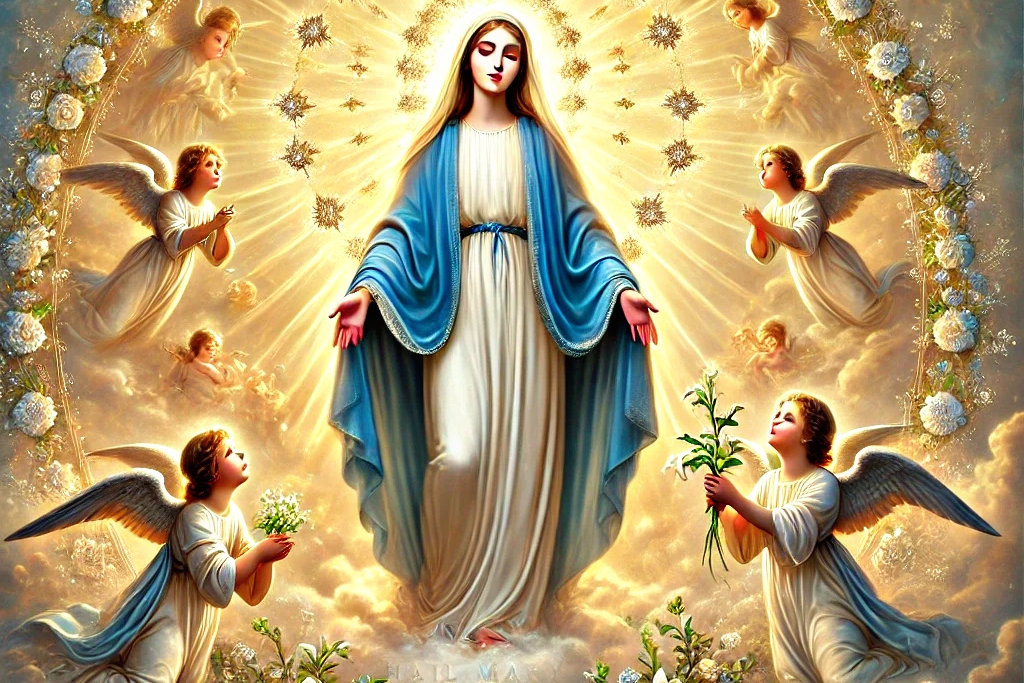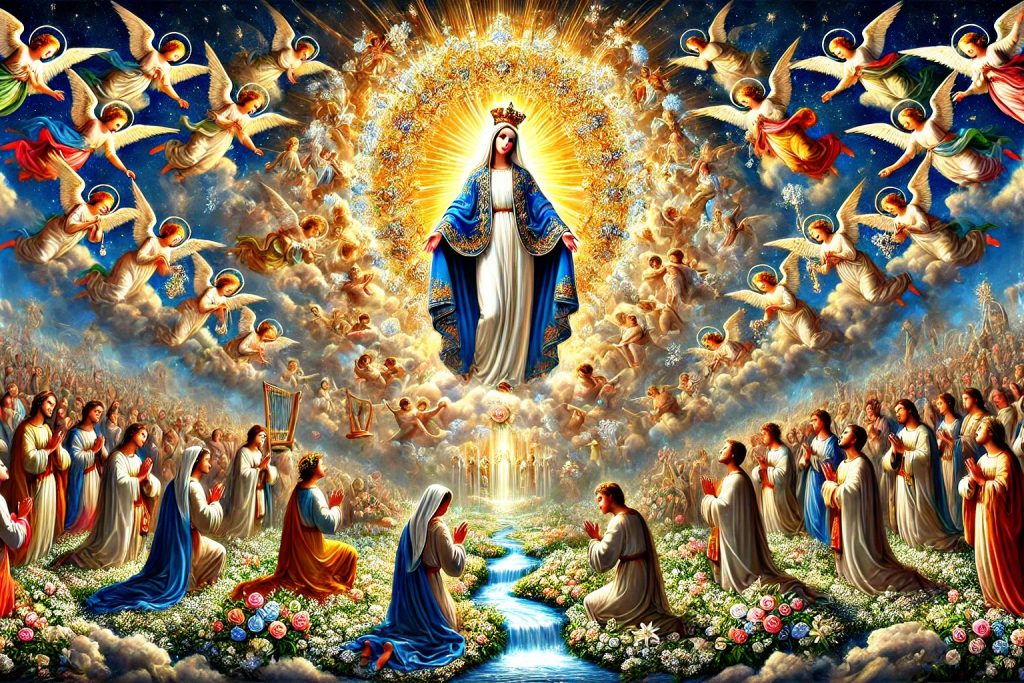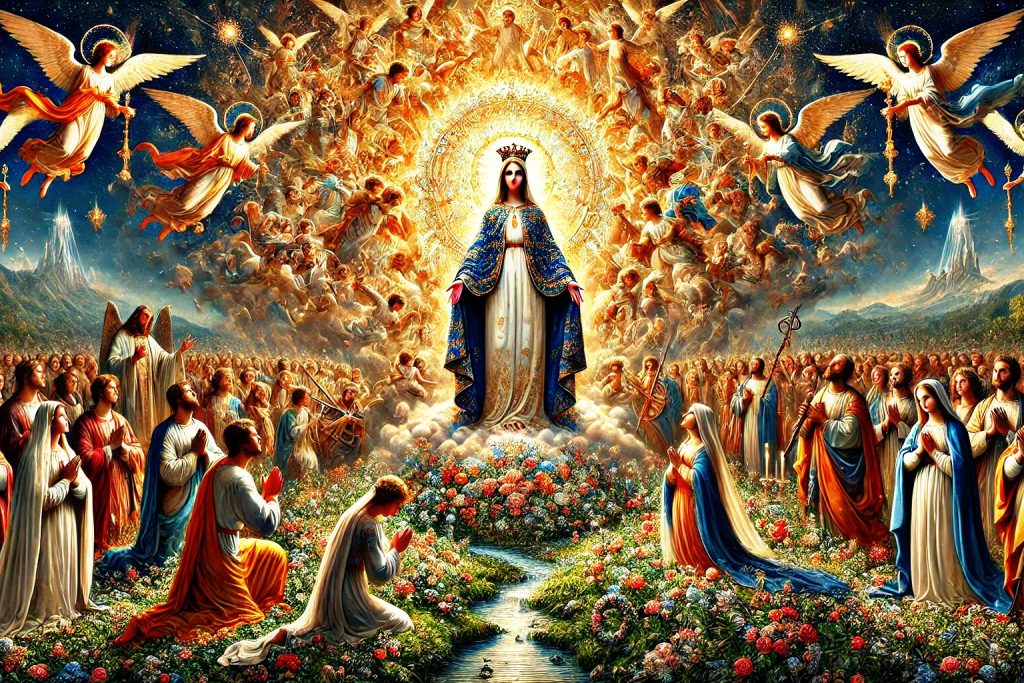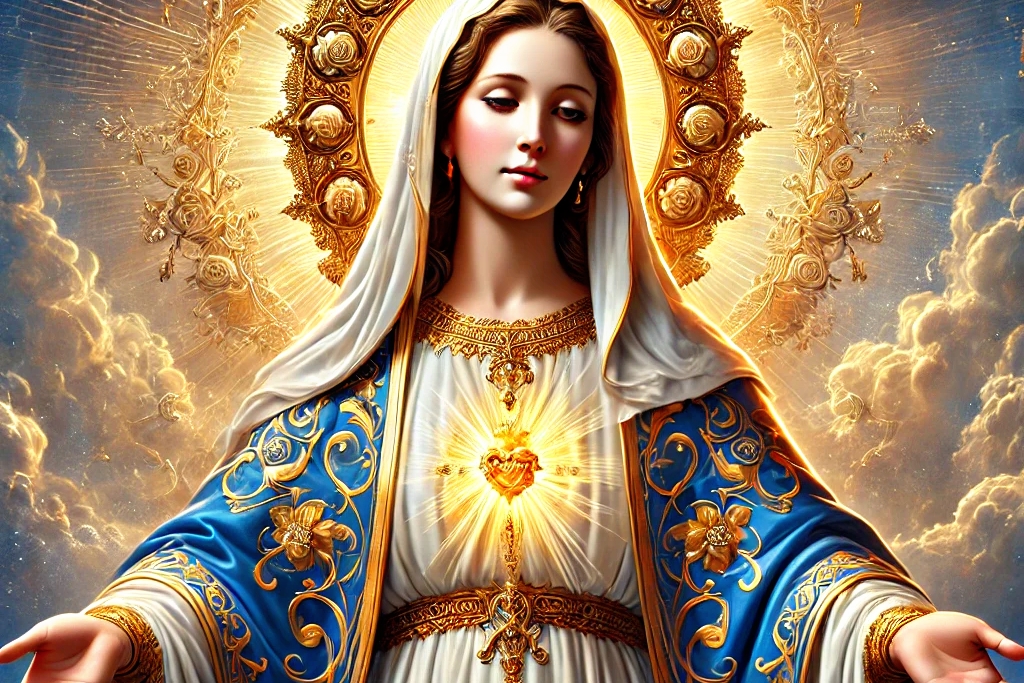The phrase “Hail Mary” holds profound meaning across various contexts, from religious devotion to football fields, and even in everyday language as a metaphor for desperation or hope. Originating in Christian prayer, the term has transcended its spiritual roots, becoming a part of global culture. Whether whispered in chapels, shouted on the gridiron, or used in casual conversation, the Hail Mary embodies themes of faith, perseverance, and human aspiration.
The Religious Origins of the Hail Mary
The Hail Mary prayer is one of the most cherished and widely recognized prayers in Christianity, particularly within Catholicism. Its origins trace back to the Bible, specifically the Gospel of Luke, where the angel Gabriel greets Mary with the words, “Hail, full of grace, the Lord is with thee” (Luke 1:28). This greeting, combined with Elizabeth’s exclamation, “Blessed art thou among women, and blessed is the fruit of thy womb” (Luke 1:42), forms the foundation of the prayer.
The full Hail Mary prayer as recited today consists of these biblical phrases followed by a petition for intercession:
“Hail Mary, full of grace, the Lord is with thee.
Blessed art thou among women, and blessed is the fruit of thy womb, Jesus.
Holy Mary, Mother of God, pray for us sinners, now and at the hour of our death. Amen.“
This prayer is central to the Rosary, a devotional practice involving the meditation on key events in the lives of Jesus and Mary. For millions of Catholics worldwide, the Hail Mary is a source of comfort and a way to seek Mary’s guidance and protection.
The Significance of the Hail Mary in Christianity

The Hail Mary reflects a deep theological emphasis on Mary as a figure of grace and intercession. She is seen not only as the mother of Jesus but also as a spiritual mother to all believers. This role is celebrated in various Marian doctrines, including her Immaculate Conception and Assumption.
The prayer also emphasizes the concept of humility and divine favor. Mary, a humble young woman, was chosen to bear the Son of God, demonstrating how faith and obedience to God’s will can lead to extraordinary outcomes. By reciting the Hail Mary, Christians seek to emulate Mary’s faith and invite her to intercede on their behalf.
Throughout history, the Hail Mary has been a source of inspiration for art, music, and literature. Iconic works such as Ave Maria by composers like Franz Schubert and Charles Gounod have elevated the prayer into cultural masterpieces. These compositions capture the reverence and beauty associated with the Hail Mary, ensuring its influence extends far beyond the walls of churches.
The Hail Mary in Sports: A Bold Play
Outside its religious context, the term “Hail Mary” has taken on a distinctly different meaning in the world of sports, particularly American football. A “Hail Mary” play refers to a long, desperate pass made in the final moments of a game, with little chance of success but immense potential reward. The phrase gained prominence in 1975 when Dallas Cowboys quarterback Roger Staubach described his game-winning touchdown pass against the Minnesota Vikings, saying, “I closed my eyes and said a Hail Mary.”
Since then, the Hail Mary play has become a symbol of last-minute heroics, embodying the spirit of hope and resilience. Fans hold their breath as the quarterback launches the ball into the air, often amidst a sea of defenders, praying for a miracle. These moments, rare as they are, epitomize the drama and unpredictability of sports.
Some of the most memorable Hail Mary plays in football history include Aaron Rodgers’ 61-yard touchdown pass in 2015 and Doug Flutie’s famous pass in 1984. Each of these moments reminds fans that even in the direst circumstances, perseverance and a bit of luck can lead to extraordinary outcomes.
The Hail Mary as a Cultural Metaphor

Beyond religion and sports, the Hail Mary has become a widely used metaphor in everyday language. It represents any bold, last-ditch effort made when all other options have been exhausted. This could be a risky business decision, a plea for reconciliation in a strained relationship, or an innovative solution to a complex problem.
For instance, an entrepreneur might describe securing a critical investor as their “Hail Mary moment,” emphasizing the urgency and uncertainty involved. Similarly, in movies and television, characters often use the phrase to highlight moments of daring or desperation, adding dramatic flair to pivotal scenes.
The metaphorical use of the Hail Mary underscores its universal appeal. It speaks to a fundamental human experience: the need to take risks and hope against hope when faced with challenging circumstances. This adaptability has cemented the Hail Mary as a timeless symbol of determination and faith.
The Intersection of Faith and Pop Culture

The dual significance of the Hail Mary in religious and secular contexts highlights the interplay between tradition and modernity. While its roots are deeply spiritual, the term has evolved to resonate with diverse audiences. This duality reflects the broader trend of religious symbols and practices finding new life in contemporary culture.
Movies, books, and music often explore themes inspired by the Hail Mary. For example, films like The Hail Mary Pass incorporate the term’s sports connotation, while others like Mary, Mother of Jesus delve into its spiritual significance. These varied representations demonstrate the versatility and enduring relevance of the Hail Mary.
In music, artists have referenced the Hail Mary in genres ranging from classical to hip-hop. Tupac Shakur’s song “Hail Mary” is a notable example, blending themes of redemption, struggle, and resilience. While controversial, such adaptations illustrate the power of the Hail Mary to inspire creativity and dialogue across cultural boundaries.
The Global Appeal of the Hail Mary
The Hail Mary’s influence extends far beyond its Western origins. In countries around the world, variations of the prayer reflect local languages and traditions. For instance, in Latin America, the Hail Mary is an integral part of religious festivals and processions, while in the Philippines, it is central to the devout practice of praying the Rosary.
Similarly, the concept of a Mary as a bold, desperate act resonates across cultures. From cricket fields in India to soccer matches in Europe, the spirit of the Mary play finds parallels in sports and storytelling worldwide. Its universal themes of hope, risk, and triumph make it a concept that transcends borders.
The Hail Mary as a Source of Inspiration

The enduring appeal of the Mary lies in its ability to inspire both individuals and communities. For many, the prayer serves as a reminder of the power of faith and the possibility of divine intervention. It encourages believers to persevere in the face of adversity, trusting that their petitions will be heard.
Artists and writers have also drawn inspiration from the Mary, using its themes of grace, redemption, and intercession to create works of profound beauty and meaning. In literature, the prayer often appears in moments of spiritual awakening or emotional catharsis. In visual art, depictions of Mary receiving the angel Gabriel’s greeting capture the awe and reverence associated with the Mary.
Musicians, too, have found creative ways to interpret the prayer. Composers like Sergei Rachmaninoff and Franz Biebl have created musical settings of the Hail Mary that evoke its deep spirituality. These compositions have become beloved staples of choral and orchestral repertoire, performed in both sacred and secular venues.
The Psychological and Emotional Impact
The Hail Mary’s repetitive structure and soothing rhythm make it a powerful tool for meditation and stress relief. For many, reciting the prayer is not only a spiritual exercise but also a way to achieve a sense of calm and focus. This dual benefit highlights the holistic nature of the Hail Mary, which addresses both the spiritual and emotional needs of individuals.
Studies in psychology suggest that repetitive prayer can have therapeutic effects, reducing anxiety and promoting a sense of well-being. The Mary, with its familiar phrases and deeply rooted associations, is particularly effective in this regard. Its recitation can serve as a grounding practice, helping individuals navigate moments of uncertainty or turmoil.
Challenges and Critiques of the Hail Mary

While the Hail Mary is widely cherished, it has also faced criticism and challenges over the years. Some Protestant denominations, for example, question the practice of praying to Mary, arguing that it detracts from the centrality of Christ. These theological differences have sparked debates about the role of Marian devotion in Christianity.
In secular contexts, the use of the term “Hail Mary” as a metaphor has occasionally been criticized for trivializing its religious significance. Some argue that its application in sports or casual language reduces a sacred prayer to a mere expression of desperation or luck. Despite these concerns, the Mary continues to resonate with diverse audiences, bridging gaps between the sacred and the secular.
Legacy in the Digital Age
In the digital era, the Mary has found new avenues for expression and dissemination. Online platforms and apps dedicated to prayer and meditation often include the Mary as a key component. Virtual Rosary groups and live-streamed prayer sessions make it easier than ever for believers to connect and share their devotion.
The Personal Connection to the Hail Mary
For many individuals, the Mary holds a deeply personal significance. It may be a prayer recited in times of need, a cherished memory from childhood, or a moment of inspiration on the sports field. This personal connection gives the Hail Mary its enduring emotional resonance.
Parents often teach their children the Mary as a foundational prayer, passing down a legacy of faith. Athletes, on the other hand, might recall a critical Hail Mary play that defined their career or inspired their love for the game. These personal stories enrich the collective understanding of the Mary, adding layers of meaning to its legacy.
Conclusion
The HailMary is far more than a prayer or a sports term—it is a symbol of faith, hope, and perseverance. Its roots in Christian devotion have given it a spiritual depth that continues to inspire millions. Meanwhile, its adoption in sports and popular culture has broadened its impact, making it a universal expression of daring and determination.
Whether whispered in a moment of quiet reflection, shouted in the final seconds of a game, or invoked as a metaphor for risk and reward, the Mary embodies the human spirit’s ability to strive for greatness. It is a testament to the power of belief, the thrill of bold action, and the timeless quest for miracles.

